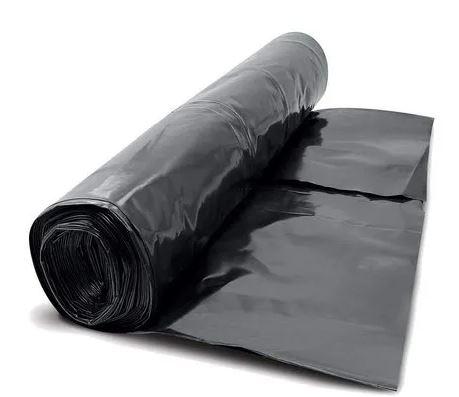High-Density Polyethylene (HDPE) sheets have emerged as a go-to material in various industries, owing to their exceptional properties and versatility. This comprehensive guide explores the world of HDPE sheets, delving into their characteristics, applications, and the myriad benefits they bring to diverse sectors.
Understanding HDPE Sheets
What is HDPE?
High-Density Polyethylene (HDPE) is a thermoplastic polymer renowned for its high strength, durability, and versatility. In the form of sheets, HDPE becomes a blank canvas for a wide array of applications across industries.
Properties of HDPE Sheets
- Durability: HDPE sheets boast exceptional durability, making them resistant to wear, tear, and impact.
- Chemical Resistance: These sheets are impervious to many chemicals, making them suitable for applications where exposure to corrosive substances is a concern.
- Weather Resistance: HDPE sheets are UV-resistant and withstand harsh weather conditions, ensuring longevity in outdoor applications.
- Flexibility: Despite their robust nature, HDPE sheets remain flexible, allowing for easy fabrication and installation.
Applications Across Industries
Construction and Building
In the construction industry, HDPE sheets find applications in various forms, from protective barriers and liners to wall cladding and roofing. Their resilience against moisture and chemicals makes them an ideal choice for long-lasting construction solutions.
Agriculture and Farming
HDPE sheets play a crucial role in agriculture, serving as liners for ponds, reservoirs, and agricultural pits. Their impermeability prevents water seepage, contributing to efficient water management in farming.
Packaging and Containers
As a packaging material, HDPE sheets shine in the form of bottles, containers, and packaging films. Their lightweight yet durable nature ensures the safe transportation and storage of various products.
Customization and Fabrication
Thermoforming Capabilities
HDPE sheets are easily customizable through thermoforming processes. This allows for the creation of intricate and precise shapes, making them suitable for diverse applications, from automotive components to consumer goods.
Welding and Joining Techniques
HDPE sheets can be seamlessly joined through various techniques, including welding. This ability to create large, continuous surfaces without weak points enhances their suitability for applications requiring robust and uniform structures.
Sustainability Aspects
Recyclability
HDPE sheets are recyclable, contributing to a more sustainable and circular economy. The ability to reuse and recycle HDPE helps minimize waste and reduce the demand for virgin plastic materials.
Use of Recycled Materials
Some manufacturers produce HDPE sheets using recycled materials, further reducing the environmental impact of the production process. Choosing products made from recycled HDPE supports eco-friendly practices.
Choosing the Right HDPE Sheet
Thickness and Application
Selecting the appropriate thickness of HDPE sheets depends on the intended application. Thicker sheets provide enhanced durability and strength, making them suitable for heavy-duty applications.
Color Options
HDPE sheets come in various colors, allowing for aesthetic customization. Depending on the application, color options can be chosen for both functional and visual appeal.
Maintenance and Care Tips
Maintaining the longevity and performance of HDPE sheets is straightforward:
- Cleaning: Regular cleaning with mild detergents helps preserve the material’s appearance.
- Avoiding Abrasives: Refrain from using abrasive materials to prevent scratches and maintain the smooth surface.
- Inspections: Periodic inspections ensure early detection of any issues, allowing for timely repairs or replacements.
Marine Engineering Innovations
Floating Structures
HDPE sheets have found a unique application in marine engineering, particularly in the creation of floating structures. Floating docks, pontoons, and platforms constructed with HDPE sheets offer durable, corrosion-resistant solutions for various marine applications.
Seawall Construction
The exceptional durability and resistance to saltwater corrosion make HDPE sheets an ideal choice for seawall construction. These structures provide coastal protection while withstanding the challenges posed by harsh marine environments.
Healthcare and Laboratory Settings
Chemical-Resistant Surfaces
In healthcare and laboratory settings, where exposure to various chemicals is common, HDPE sheets excel as chemical-resistant surfaces. They are employed as countertops, workstations, and lining materials in laboratories to ensure a safe and durable environment.
Sterile Packaging
The inert nature of HDPE makes it suitable for sterile packaging applications in the healthcare industry. From medical instruments to pharmaceutical products, HDPE sheets maintain the integrity of sterile environments.
Environmental Containment Solutions
Landfill Liners
In waste management, HDPE sheets serve as effective landfill liners. Their impermeability prevents leachate from contaminating the soil and groundwater, contributing to environmentally responsible waste disposal practices.
Pond and Reservoir Liners
For water containment in ponds and reservoirs, HDPE liners provide a reliable solution. Their ability to resist UV radiation and withstand varying temperatures makes them an excellent choice for water containment applications.
Transportation Infrastructure
Noise Barriers
HDPE sheets are utilized as effective noise barriers in transportation infrastructure. Installed along highways and railways, these barriers mitigate noise pollution, providing a quieter and more comfortable environment for surrounding communities.
Bridge Deck Underlayment
Underneath bridge decks, HDPE sheets serve as a protective underlayment, preventing water infiltration and enhancing the longevity of the structure. Their resistance to chemicals and weathering ensures reliable performance in demanding conditions.
Aerospace Applications
Aircraft Interior Components
In the aerospace industry, HDPE sheets are employed for manufacturing interior components of aircraft. Their lightweight yet durable nature contributes to fuel efficiency while meeting stringent safety and regulatory standards.
Ground Support Equipment
For ground support equipment in airports, HDPE sheets are used to create lightweight, corrosion-resistant components. These materials withstand the demanding conditions of airport operations, ensuring longevity and reliability.
Future Trends and Innovations
3D Printing with HDPE
The integration of HDPE into 3D printing technology is an emerging trend. This allows for the creation of intricate and customized components, opening new possibilities for rapid prototyping and manufacturing.
Biodegradable HDPE
In response to environmental concerns, researchers are exploring the development of biodegradable HDPE. These innovative formulations aim to address end-of-life challenges associated with traditional plastics, offering a more sustainable solution.
Conclusion: A Material Shaping Tomorrow’s Landscape
High-Density Polyethylene (HDPE) sheets transcend conventional applications, proving their worth in diverse and cutting-edge industries. As technology advances and sustainability becomes paramount, HDPE continues to evolve, adapting to the ever-changing demands of modern society



